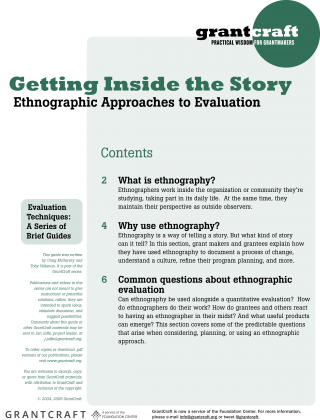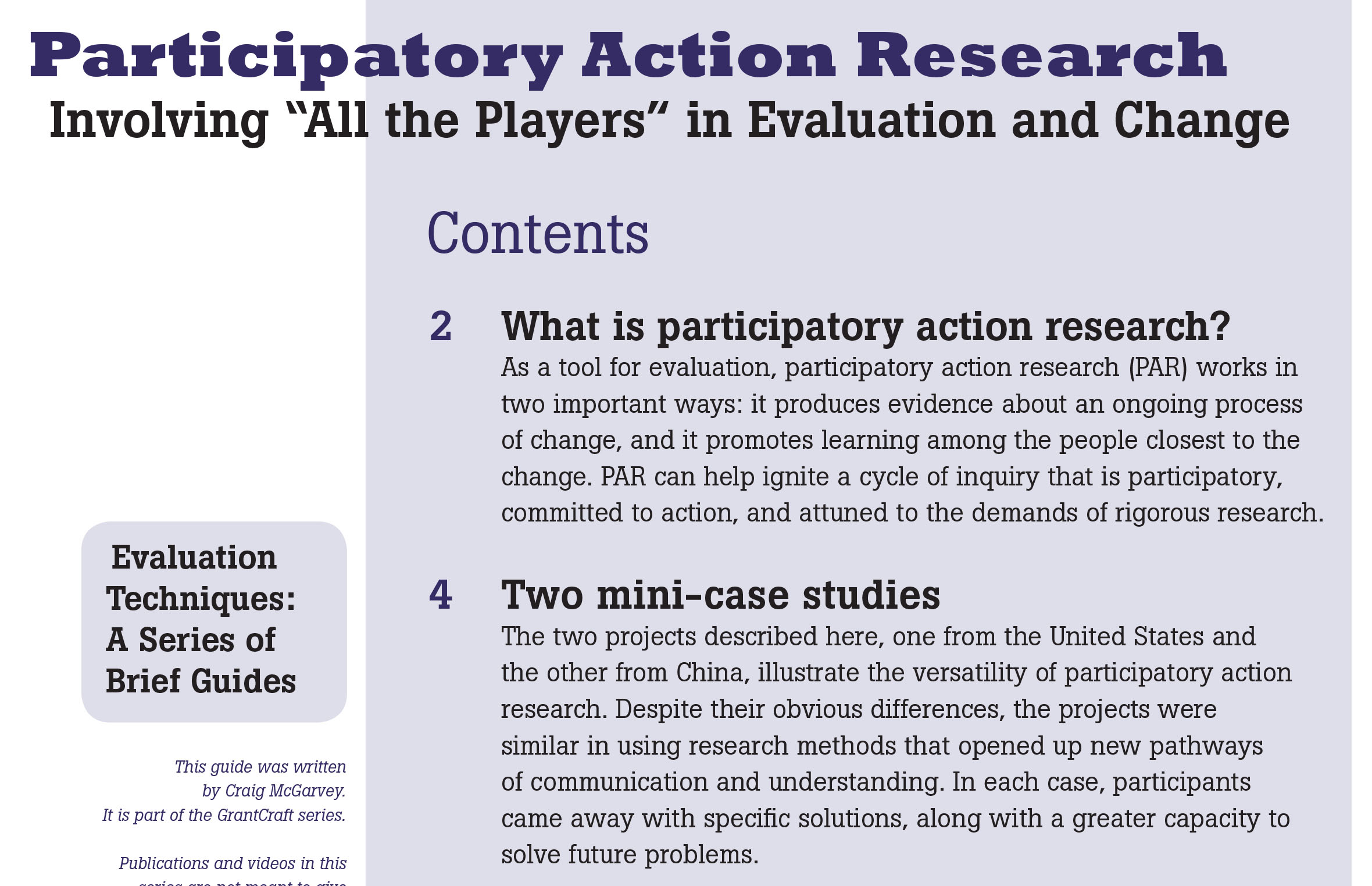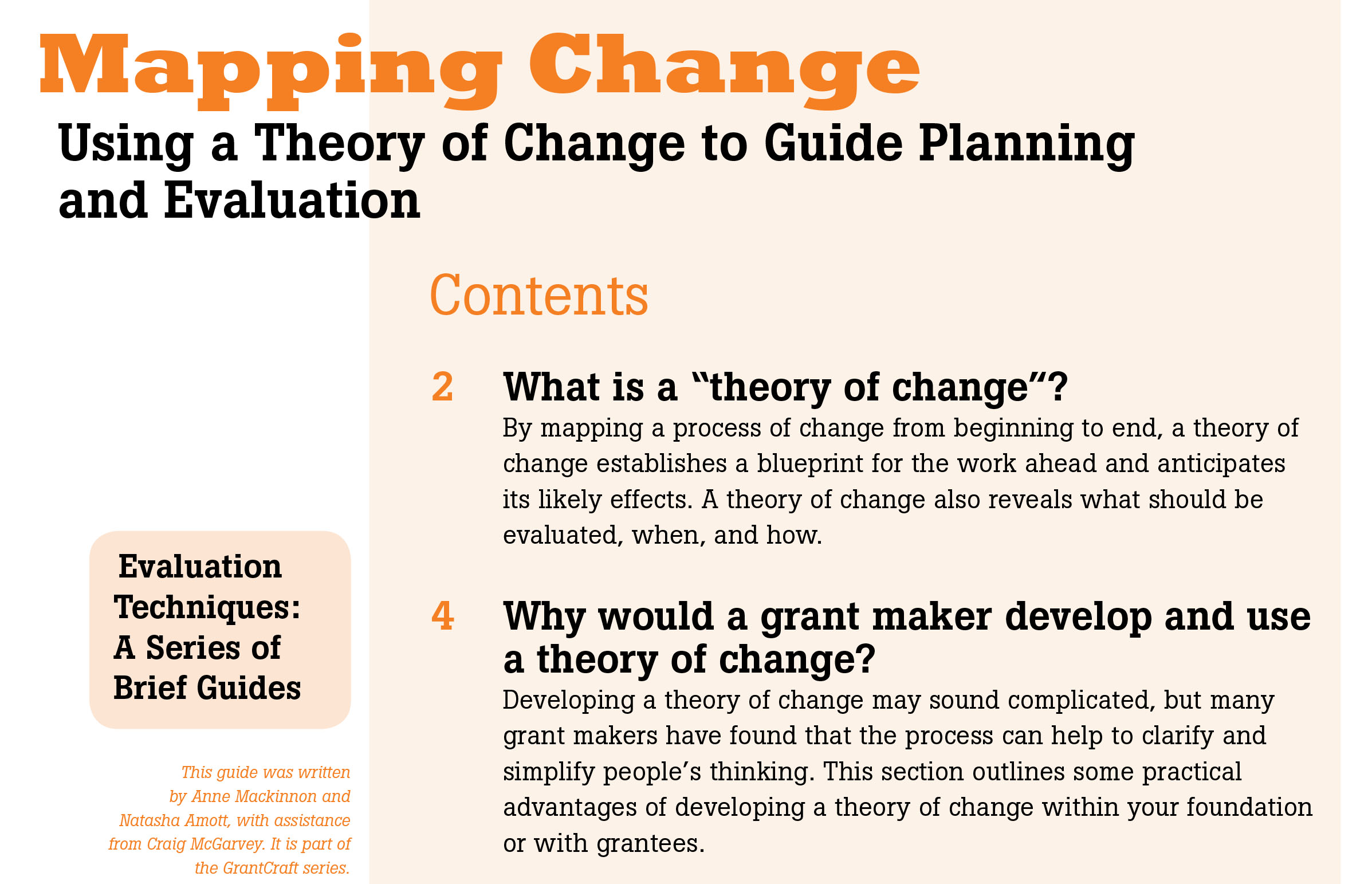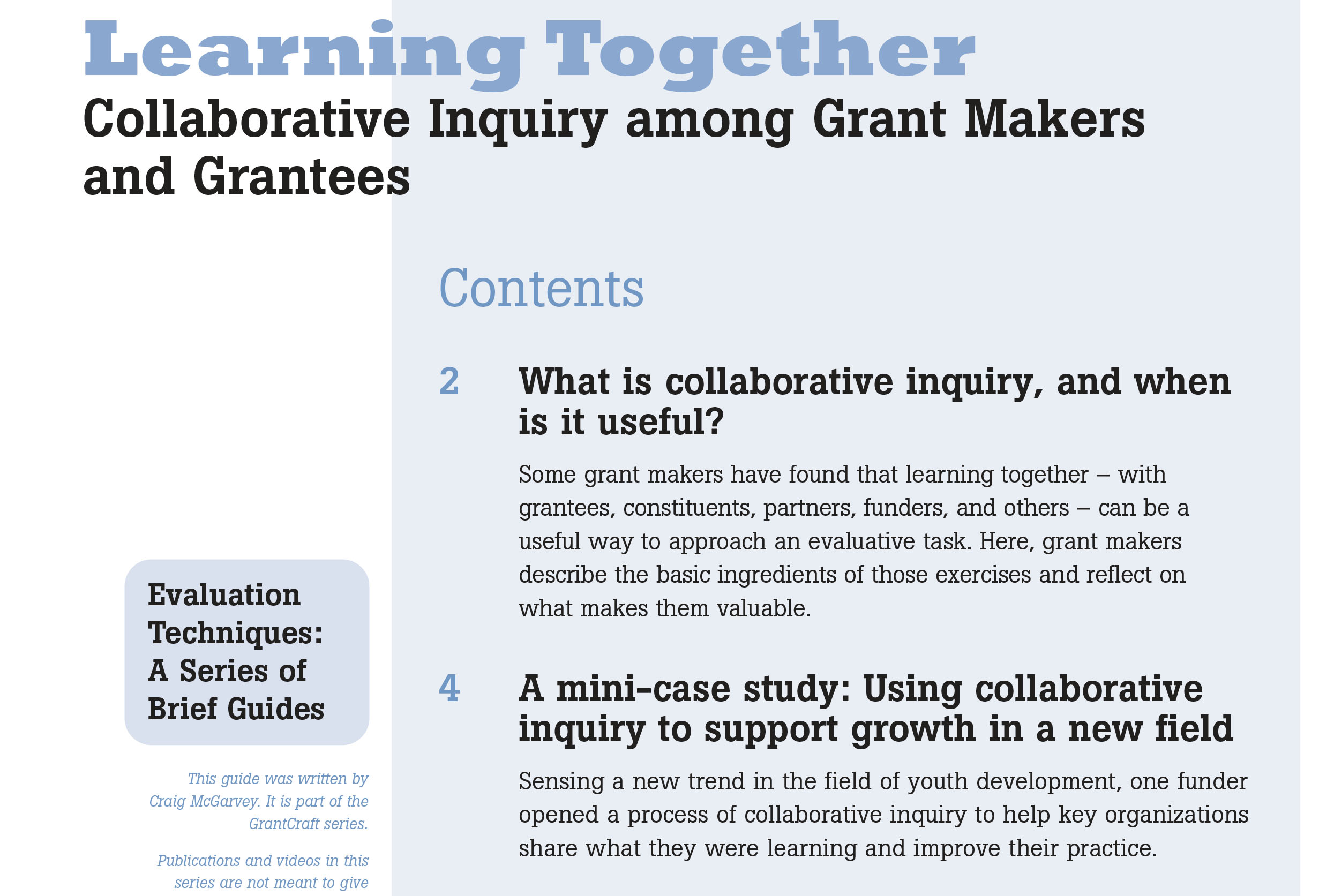Getting Inside the Story Ethnographic Approaches to Evaluation
To get insight into a complex community, problem or process of change, sometimes you need to look beyond conventional research or evaluation methods. Ethnography is a powerful way to step inside the culture of an organization or community, hear ongoing feedback from multiple points of view, and understand a program's real impact. In this guide, learn about ethnography's benefits and pitfalls, and see how grantmakers use the method to document, evaluate and improve approaches to youth engagement, HIV education and neighborhood policing.
Highlights
- Understanding ethnography's pros and cons
- Generating lessons quickly and continuously
- Telling a more authentic institutional or community story
- Stimulating reflection on the front lines
This guide is part of a series on evaluation techniques, check out related content below for additional resources in this series.

Categories
Content type
-
Link to Learning Together
Simple Definition: Ethnography
Ethnography is a form of research that can give grantmakers — and, often, grantees — a close, nuanced, and evolving look at an organization, a culture, or a process
Read more
of change. -
Link to Learning Together
Additional Resources: Ethnographic Approaches to Evaluation
Online sources
- Ethnographies about community leaders, on the website of Leadership for a Changing World, a project that is exploring the nature of social-change leadership. The research team, led by Sonia Ospina, is based at New York University.
-
Link to Learning Together
What Can Ethnography Do?
Yes, Ethnography is a powerful tool, but you should also be aware that it can:
Read more -
Link to Learning Together
Common Questions About Ethnographic Evaluation: Practical Implementation
Q: What’s the relationship between ethnography and more quantitative forms of evaluation?
Read more
A: Ethnography is often used in tandem with quantitative approaches. -
Link to Learning Together
Why Use Ethnography? To Contextualize Quantitative Hypothesis
One project, for example, used ethnography to examine the effects of an intensive form of policing. The police had put targeted pressure on street corners where drug activity had been observed.
Read more -
Link to Learning Together
Why Use Ethnography? To Tell a Deeper, More Authentic Community Story
A large regional foundation used ethnography as one component of the evaluation of a five-year initiative to engage young people as leaders in improving community health outcomes.
Read more -
Link to Learning Together
Why Use Ethnorgraphy? To Generate Lessons Quickly and Continuously
When grantmakers at a large international foundation decided to go forward with a major, multiyear initiative to support artistic collaborations between performing arts groups in the United States and Latin America, Africa, and Asia, a colleague asked them, “How are you going to know what experiences the artists have in all of this process? How are you going to know how the artists are treated and what their view on things is?”
Read more - Link to Learning Together
To get insight into a complex community, problem or process of change, sometimes you need to look beyond conventional research or evaluation methods. Ethnography is a powerful way to step inside the culture of an organization or community, hear ongoing feedback from multiple points of view, and understand a program's real impact. In this guide, learn about ethnography's benefits and pitfalls, and see how grantmakers use the method to document, evaluate and improve approaches to youth engagement, HIV education and neighborhood policing.
Highlights
- Understanding ethnography's pros and cons
- Generating lessons quickly and continuously
- Telling a more authentic institutional or community story
- Stimulating reflection on the front lines
This guide is part of a series on evaluation techniques, check out related content below for additional resources in this series.





